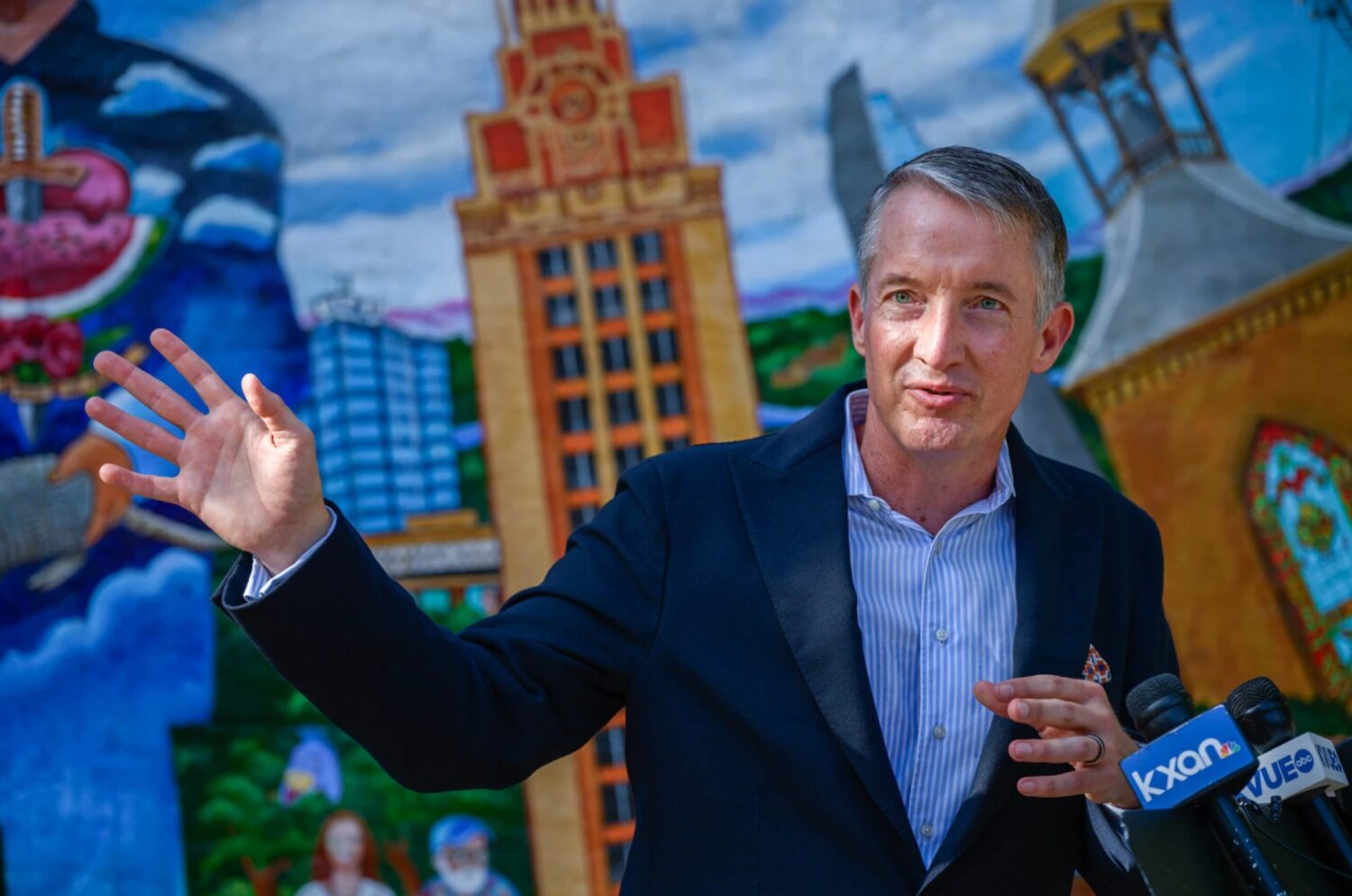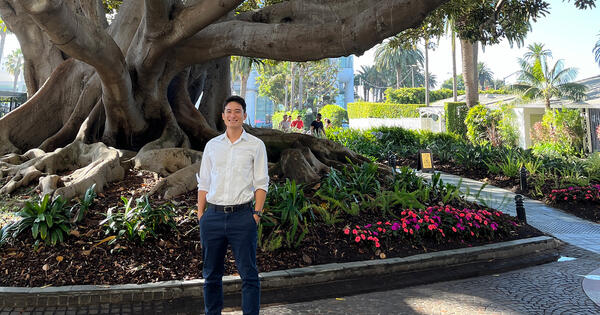Austin, TX
Despite strong economy, Texas cities grapple with excess office space
/static.texastribune.org/media/files/057f99208ed3054abc5730030959c4d8/Dallas%20Bullet%20Train%20BT%20TT%2012.jpg)
Sign up for The Brief, The Texas Tribune’s daily newsletter that keeps readers up to speed on the most essential Texas news.
Texas office workers are back in person more than their counterparts across the country — but a lot of the state’s urban office space is still sitting empty.
The Austin, Dallas-Fort Worth and Houston areas have office vacancy rates that range from 21% to 25%, vacancies that could complicate the post-pandemic recoveries of downtown areas, which depend on office workers to support restaurants and retail businesses. But whether the glut of space at a time when developers are continuing to construct more office buildings foreshadows a brewing economic storm remains to be seen.
“Is it soft? Yes. Is it a challenge? Yes. Is there a crash coming? I would not say that that’s the situation we are in,” said Julie Whelan, who heads a research team that studies trends in commercial real estate for the firm CBRE Group.
Texas’ relatively strong economy, growing labor force and high number of workers returning to the office has buoyed hopes that the office market isn’t facing dire straits.
Still, some real estate and office market analysts worry about what are called “shadow vacancies.” Even as employees spend more time in the office, they’re not there as often — or in such high numbers — as they were before the pandemic. That means office space that looks occupied on paper could be sitting relatively vacant — and that companies won’t renew their leases, bumping up vacancy rates.
“The return to the heyday where everybody was in the office four or five days a week, that’s just not happening ever again,” said Steven Pedigo, director of the University of Texas at Austin’s LBJ Urban Lab, which focuses on urban policy.
“The perfect storm”
Fewer than 6% of Texas employees worked from home before COVID-19 hit, according to the U.S. Census Bureau. Last year, remote employees accounted for more than 15% of the state’s workforce — a percentage that’s even higher in the state’s urban areas.
The Austin area has a greater share of remote workers than other Texas metros thanks to its tech sector. That 28% figure has fallen only slightly even as its workers return to the office at higher rates than elsewhere in the country.
Before the pandemic, the Austin area’s office vacancy rate sat below 10%, according to CBRE. At the end of the third quarter this year, that rate was nearly 22%.
Some of that vacancy comes from some major employers scaling back their office plans. Some 11% of the Austin central business district’s 15 million square feet of office space is available to “sublease” — a result, real estate analysts say, of employers pulling back on how much office space they need.
Meta, the parent company of Facebook and Instagram, had planned to move into 589,000 square feet of offices in downtown Austin. Instead, it nixed those plans and will lease the space to other tenants — along with 100,000 square feet elsewhere in downtown the company planned to occupy.
“What’s happening is that companies just realize, ‘Hey, now that we’re measuring utilization (of office space), we don’t need all the space,’” said Phil Mobley, national director of office analytics at CoStar, a company that tracks commercial real estate. “So they’re taking the opportunity, when leases expire, to reduce their space and they’re placing a lot of space on the sublet market.”
In Austin, more than 5 million square feet of office space is under construction, nearly half of it downtown. Much of it was planned when builders wagered, given the city’s strong economic pull, that demand for new space would be there when those buildings eventually open.
“The environment in which those buildings are going to be delivered into looks different than the environment in which they were initially begun,” Mobley said.
Less than a quarter of the space under construction has leased to tenants, according to a recent report from Cushman & Wakefield.
Austin is “having the perfect storm of falling demand with rising supply,” Mobley said.
In Dallas-Fort Worth and Houston, the rise of remote work exacerbated already-high vacancy rates brought on by overbuilding in the ‘80s and ‘90s that still casts a shadow on the current office market.
“Dallas, like many Texas cities, built beautiful, high-rise, shiny buildings that were enormous,” said Jennifer Scripps, who leads the economic development group Downtown Dallas Inc. “They weren’t full when they opened and they never filled up.”
A key driver of the current vacancies: Employers are trying to lure their workforce back to the office by leaving their old spaces to set up shop in sleeker, more modern digs. It’s a trend office market observers call “flight to quality.”
In Dallas, Bank of America plans to swap its space in the most prominent tower on the downtown skyline for a newer building just outside the central business district. There, it will join JP Morgan Chase, which made a similar move in 2021.
In downtown Houston, NRG Energy plans to move its headquarters in 2026 to a recently renovated skyscraper billed as an “urban, mixed-use office campus” that has a luxury gym and access to the downtown tunnel system.
But that “flight to quality” has left older, less attractive space unoccupied. More than a quarter of Houston’s downtown office space is sitting empty, according to CBRE. Roughly half of that vacant space is basically “unmarketable” because it’s so out-of-date, said Kris Larson, president and CEO of Central Houston Inc.
Newer buildings or those that have recently undergone renovations “are performing much better than the older building stock, which is losing a lot of its tenants to these basically newer [additions] to the marketplace,” Larson said.
Few options to turn things around
High office vacancies in other parts of the country like New York and San Francisco have spurred fears of an urban “doom loop.” That’s a term used to describe economic downturns in which offices shuttering lead to closures of nearby businesses like restaurants and shops that rely on traffic from office workers. That many closures can lead to blight, lower property tax revenues and declining city services as a result.
Houston City Controller Chris Brown said office vacancies alone — if they persist — could lead to lower commercial property values, which in turn could hurt the budgets of cities and school districts that heavily rely on property taxes.
“Those are huge assets,” Brown said of downtown office buildings. “So how do we project our tax base growth? We have to be more conservative about our assumptions. But you never know what could happen.”
Some Texans are bullish that the state’s major urban areas are safe from any kind of “doom loop.” For one, the state’s economy is booming and its population growth is strong. Its workers are already back in the office in higher numbers than in other major cities. The number of people living in Texas downtowns have surpassed pre-pandemic levels, according to a report from the Center City District in Philadelphia. Tourists also have returned to downtowns even if workers still lag behind, the report found.
Still, the glut of empty office space poses a major challenge. And that’s true across the globe. In nine major cities including Houston, demand for office space could be as much as 20% lower in 2030 than it was in 2019, according to a recent report from consulting firm McKinsey & Company.
If demand for office space ever returns to pre-pandemic levels, it could take decades, the report found. In the meantime, falling demand stands to wipe out $800 billion in property values in those nine international cities, McKinsey found — posing a major challenge for local governments’ property tax collections.
And owners of office buildings with lots of vacancy have few options to turn things around, said Harold Hunt, a research economist who studies commercial real estate at the Texas Real Estate Research Center at Texas A&M University. They can keep the building as-is and deal with diminishing returns or upgrade it in order to compete with glitzier office properties, Hunt said. Owners can also sell the building or demolish it.
Building owners can also convert their empty office space to residential housing, Hunt said, an idea that’s gained a lot of attention as the nation faces a glut of vacant offices and shortage of housing, Hunt said. But not every office building is a suitable conversion candidate.
“What do you do with a million and a half square feet if nobody wants it anymore?” Hunt said. “Everybody just sort of scratches their head.”
Disclosure: Bank of America, Facebook, NRG Energy, Texas A&M University and University of Texas at Austin have been financial supporters of The Texas Tribune, a nonprofit, nonpartisan news organization that is funded in part by donations from members, foundations and corporate sponsors. Financial supporters play no role in the Tribune’s journalism. Find a complete list of them here.

Austin, TX
Texas schools hoping lawmakers increase funding during legislative session

AISD budget deficit and the Texas legislature
The new legislative session starts soon. All this month, 7 On Your Side will be taking a look at some of the big issues at the state capitol. Among them is education after the legislature failed to pass a school funding measures during the last session. As a result, districts across Central Texas are finding themselves “in the red,” including Austin ISD
AUSTIN, Texas – The new legislative session starts in one week. Among the major issues facing lawmakers will be education, after the legislature failed to pass a school funding measure during the last session. Against that backdrop, districts across Central Texas are finding themselves in the red, including Austin ISD.
“In my time on the board, we have not had this much of a deficit,” said Austin ISD board president Arati Singh.
Singh is concerned about the current $92 million budget deficit, about 10% of the overall budget.
“It is tough. It’s not easy,” said SIngh.
“I am definitely concerned as a school leader,” said Melissa Rodriguez, principal of Lively Middle School.
In fact, about two-thirds of districts in Central Texas are operating in a deficit right now, and many ISD leaders point to stagnant public school funding from the state.
“There is something historic happening here that our state is choosing not to fund public education,” said Singh.
Texas: The Issue Is: School choice fight
Texas Governor Greg Abbott is confident that school choice legislation will pass during the next legislative session, but Democrats say they won’t roll over without a fight. FOX 7’s Rudy Koski talks to vocal voucher opponent State Rep. James Talarico, D-Austin, about the fight ahead and if there is room for common ground.
In 2023, Gov. Greg Abbott’s school choice voucher plan fell short, and public school funding measures that were tied to it stalled as well, like teacher pay raises, enhanced career training for students, and raising what’s known as the “basic allotment”, the per-student amount that districts get from the state. The basic allotment has been stuck at $6,160 since 2019, despite big-time inflation since then.
“We rank near the bottom nationally in this per student funding,” said Singh. “It’s not actually based on the cost of actually educating a child.”
Singh also points to increased costs related to House Bill 3, the school safety law passed in 2023.
On top of that, Austin ISD pays out hundreds of millions of dollars in school property tax money to the state every year in what’s known as “recapture,” a way to even out the wealth among Texas districts. Last year, AISD’s payment was $699 million, the highest in the state. That amount is based on local property values.
MORE 7 ON YOUR SIDE STORIES:
“Yeah, it is [unfair], because property values really don’t have a whole heck of a lot to do with the needs of students in a city,” said Singh. “Over half of our students are economically disadvantaged.”
So, with the $92 million shortfall in mind, a committee was formed, which spent the fall figuring out how to make it up over three years. That plan was presented to the board in December.
“It is difficult,” said Superintendent Matias Segura at the December 12 meeting. “Everything has an impact.”
In this current school year, the proposed cuts include things like eliminating some vacant positions, changes to technology, reorganizing departments, and reducing the number of special education vendors.
In the 2025-26 school year, the district plans to have some central office employees work from home, so it can lease space in that building, as well as changing bus routes, optimizing master schedules, and reducing portable classrooms, among other things.
AISD gives update on special education
Austin ISD leaders provided an update on its progress in meeting the requirement for special education services.
The catch?
“We don’t know yet how much of a cost reduction each of these will yield,” said Segura.
If the budget is not reduced by enough next year, that’s when district officials say the cuts will really start being felt at the school level.
“I am concerned that we would maybe have to consider increasing class sizes,” said Singh. “Cutting planning periods for our staff.”
“We have to do more with less,” said Lively Middle School Principal Melissa Rodriguez.
Rodriguez says any cuts to the arts would be very tough.
“Our students absolutely love participating in music, art, theater, guitar, orchestra. They are motivated by that,” said Rodriguez. “So if we take that from them, we’re really taking a big part of what they love.
Some parents and teachers are urging caution.
“I’m confused about why you would rush to vote on a budget when we don’t yet know what will come out of the legislative session,” said Tracy Dunlap, a teacher at Maplewood Elementary School, at the November 21 AISD board meeting.
Abbott moves even closer to passing school vouchers
Election night brought Texas Gov. Greg Abbott another step closer to getting his school choice plans passed, allowing taxpayer dollars to help parents pay for private school tuition.
But, as all this happens, some are opening up their pocketbooks to help.
“People who reach out to us and say ‘I’m seeing what’s happening to public schools and I care and I want to do something to support it,’” said Michelle Wallis, executive director of the Austin Education Fund.
“The work that we’re doing through the Austin Ed Fund feels even more critical now,” said Wallis. “We funded 66 projects across Austin to the tune of about $450,000 this year.”
Still, the district will need much more to get out of the current hole. Recent comments from Gov. Greg Abbott about the upcoming session has some people feeling optimistic.
“We will fully fund public schools in the state of Texas. We will provide teacher pay raises,” Abbott said in November.
Austin ISD listed recapture reform among its legislative priorities. But for Singh, boosting the basic allotment will be the real game-changer.
“We really need the state to step up,” said Singh.
Austin’s budget deficit would be even higher if not for $30 million in cuts that were made at the central office over the summer, including 12 layoffs, as well as $20 million from the passage of Proposition A by voters in November.
The upcoming round of cuts is expected to be finalized by the school board in the coming weeks.
The Source: Information from interviews conducted by FOX 7 Austin’s John Krinjak
Austin, TX
University of Texas at Austin President Jay Hartzell leaving to lead Southern Methodist University | Houston Public Media

Manoo Sirivelu/KUT News
University of Texas at Austin President Jay Hartzell announced Tuesday he has accepted an offer to lead Southern Methodist University, a private university in Dallas. His last day at UT will be May 31, according to the University of Texas System.
“I am very grateful to Chairman Kevin Eltife and the UT System Board of Regents for the incredible opportunity they provided me to serve UT Austin in this role,” Hartzell wrote in an email announcing his resignation to the UT community.
Eltife and UT System Chancellor J.B. Milliken congratulated Hartzell on the new role.
“We have worked closely with UT Austin during Jay Hartzell’s five years as president, and we will continue to do so in the months ahead to ensure a smooth transition,” they said in a statement.
Hartzell has served as the president of UT Austin since 2020, when the UT System’s Board of Regents voted unanimously to name him to the job. He replaced Greg Fenves, who served as president for five years before leaving for Emory University in Atlanta.
The SMU Board of Trustees voted unanimously to offer Hartzell the position following a national search. Chair David B. Miller praised Hartzell as a respected leader in higher education.
“His leadership at UT Austin and commitment to advancing programs across diverse disciplines, including humanities, social sciences, arts, education, business, law, student life, and intercollegiate athletics, make him an excellent choice as SMU’s eleventh president,” Miller said in a statement. “He also understands the vital role Texas and its universities play in the nation’s vibrant economy.”
In his email, Hartzell said by accepting the job he was following the advice he gives students: “Follow your passions, take some chances, stretch outside your comfort zone, and think of how you would like to make an impact.”
Hartzell noted that under his leadership UT Austin achieved new highs when it comes to applications, enrollment and graduation rates. Just last year, he announced UT Austin would tighten requirements for automatic admission for Texas high school students in response to the growing number of applicants. The number of applications for freshman admission for the fall 2025 term increased by more than 24% over the previous year.
During Hartzell’s tenure, UT Austin also launched new academic programs, more resources for student housing, began the renovation of the Tower and joined the Southeastern Conference.
His time as president was also marked by challenges and controversy as he led the university through a state-mandated ban on diversity, equity and inclusion programs as well as pro-Palestinian protests last spring.
UT Austin laid off dozens of employees who used to work on DEI programs after Senate Bill 17 took effect last January. Some students and faculty raised concerns the flagship institution was going beyond the scope of SB 17 and eliminating offices and programs that didn’t violate the law. Republican lawmakers indicated during a hearing in November that they plan to expand DEI restrictions at public colleges and universities during the legislative session that begins next week.
Hartzell received both praise and criticism for his response to pro-Palestinian protests on campus last year, which resulted in more than 130 arrests. His decision to call in state police was hailed by Republican leaders, but blasted by some faculty and students.
Hartzell, who previously served as dean of the McCombs School of Business, said he is grateful for his nearly three decades at UT Austin.
“I will be eternally grateful for my 29 years at UT as a student, faculty member, and administrator,” he said. “My wife, Kara, and I will always be Longhorns — as alumni, parents, passionate supporters, and fans — even when we are no longer on the faculty or staff.”
Hartzell announced the decision to leave UT Austin a day after the university promoted Rachel Davis Mersey to executive vice president and provost. She has held the key position on an interim basis since Aug. 27.
Austin, TX
UT-Austin President Jay Hartzell leaves to lead SMU
:focal(1x0:3000x1565)/static.texastribune.org/media/files/5a3cf938e8dcbdb385730bf87a311d7a/UT%20TIE%20Presser%20LW%20TT%2009.jpg)
Sign up for The Brief, The Texas Tribune’s daily newsletter that keeps readers up to speed on the most essential Texas news.
University of Texas at Austin President Jay Hartzell is leaving the UT System’s flagship school to become the next president of Southern Methodist University, he announced Tuesday.
Hartzell said in a press release that this was an opportunity “I could not pass up.”
“I look forward to building upon the university’s remarkable momentum and leading SMU into its next era,” he said.
SMU’s current president, R. Gerald Turner, will transition this summer to the role of president emeritus. He has led the university for three decades.
Hartzell’s formal installation as president of SMU is tentatively scheduled for next fall.
It was immediately unclear who will lead UT-Austin in the interim or when the university will have a new president.
Hartzell has been president of UT-Austin since 2020. He previously served as dean of the McCombs School of Business and has been a UT-Austin faculty member since 2001.
Last year, his request for armed state troopers to respond to pro-Palestinian protests on campus received a vote of no confidence from faculty and praise from the GOP.
The most important Texas news,
sent weekday mornings.
This is a developing story; check back for details.
Disclosure: Southern Methodist University, University of Texas at Austin, University of Texas at Austin – McCombs School of Business and University of Texas at Austin – Texas Enterprise – McCombs School of Business have been financial supporters of The Texas Tribune, a nonprofit, nonpartisan news organization that is funded in part by donations from members, foundations and corporate sponsors. Financial supporters play no role in the Tribune’s journalism. Find a complete list of them here.
-

 Business1 week ago
Business1 week agoThese are the top 7 issues facing the struggling restaurant industry in 2025
-

 Culture1 week ago
Culture1 week agoThe 25 worst losses in college football history, including Baylor’s 2024 entry at Colorado
-

 Sports7 days ago
Sports7 days agoThe top out-of-contract players available as free transfers: Kimmich, De Bruyne, Van Dijk…
-

 Politics6 days ago
Politics6 days agoNew Orleans attacker had 'remote detonator' for explosives in French Quarter, Biden says
-

 Politics5 days ago
Politics5 days agoCarter's judicial picks reshaped the federal bench across the country
-

 Politics4 days ago
Politics4 days agoWho Are the Recipients of the Presidential Medal of Freedom?
-

 Health3 days ago
Health3 days agoOzempic ‘microdosing’ is the new weight-loss trend: Should you try it?
-

 World1 week ago
World1 week agoIvory Coast says French troops to leave country after decades

:focal(0x0:3000x2000)/static.texastribune.org/media/files/f60236493478a75ab8f30d9fc569cc00/1029%20SCOTX%20at%20UH%20DS%20TT%2026.jpg)
















